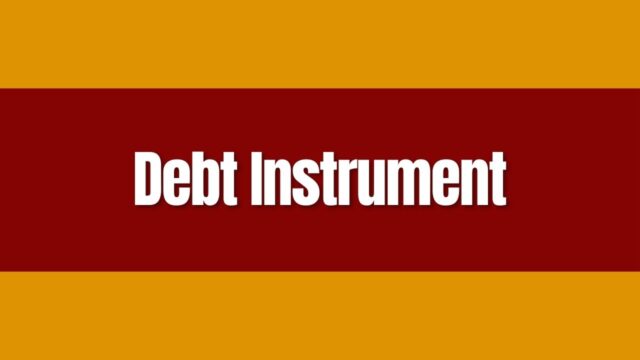
What is a debt instrument and what are its main features
A debt instrument is a type of security that represents a loan between two parties. The most common types of debt instruments are bonds and loans. The issuer of the debt instrument is the borrower, and the investor is the lender. The borrower agrees to pay back the loan, plus interest, over a set period of time. The terms of the loan are set forth in the debt instrument. For example, a bond typically has a face value, which is the amount that will be repaid at maturity, and an interest rate, which is the percentage of the face value that will be paid as interest. Bonds also have a maturity date, which is the date on which the face value will be paid back in full. Loans typically have a similar structure, with a principal amount, an interest rate, and a repayment schedule. Debt instruments can be issued by corporations, governments, or other entities.
Types of debt instruments
There are many different types of debt instruments, each with its own unique features and benefits. Perhaps the most common type of debt instrument is the bond. A bond is a loan that is typically issued by a government or corporation in order to raise capital. In exchange for lending money to the issuer, bondholders are promised periodic interest payments and the return of their principal at maturity.
Another popular type of debt instrument is the term loan. A term loan is a fixed-sum loan that is typically repaid in equal installments over a set period of time. The repayment schedule of a term loan can vary depending on the needs of the borrower, but it typically ranges from one to five years.
Finally, lines of credit are another type of debt instrument that can be used by borrowers in need of short-term financing. Unlike term loans, lines of credit allow borrowers to borrow only the amount of money that they need at any given time, making them an ideal option for businesses with seasonal or fluctuating cash flow needs.
The benefits of investing in debt instruments
Debt instruments are a popular investment choice for many people, and there are several good reasons for this. First of all, debt instruments tend to be relatively stable, which means that they offer a degree of security that other investments might not. Additionally, debt instruments often provide a higher rate of return than other types of investments, which can make them an attractive option for those looking to grow their portfolio.
Finally, debt instruments can be a good option for those who want to diversify their investment portfolio, as they offer exposure to a different asset class than stocks or bonds. Whatever your reason for considering investing in debt instruments, it’s important to understand the risks and rewards involved before making any decisions. but overall, investing in debt instruments can be a smart move for many people.
The risks associated with investing in debt instruments
One of the biggest risks associated with debt instruments is the possibility of default. When a borrower defaults on a debt instrument, the investment loses all value. As a result, investors could potentially lose all of their original investment. In addition, there is also the risk that interest rates will rise, which would reduce the value of the investment.
Despite these risks, debt instruments can still be a worthwhile investment for those who are willing to take on a bit more risk. When done correctly, investing in debt instruments can provide a higher return than other types of investments such as stocks or bonds. As with any investment, however, it is important to research the options carefully before making any decisions.
Tips for choosing the right debt instrument for your portfolio
There are a variety of debt instruments available to investors, and choosing the right one for your portfolio can be a challenge. Here are a few things to keep in mind when making your decision:
First, consider your investment goals. Are you looking for income or capital appreciation? Different debt instruments offer different levels of return, so it’s important to align your investments with your goals.
Second, think about your risk tolerance. Some debt instruments are more volatile than others, so it’s important to choose an investment that fits with your risk profile.
Finally, be sure to diversify your portfolio. Don’t put all your eggs in one basket by investing in just one type of debt instrument. By diversifying, you’ll minimize your risk and maximize your chances of achieving your investment goals.
Conclusion
To sum up, debt instruments are an important part of the financial markets and can be used by both individuals and businesses to raise capital. However, it is important to understand the risks involved before investing in any type of debt instrument. Thanks for reading!


































